The Team behind Northern Hail Project
Project Leadership
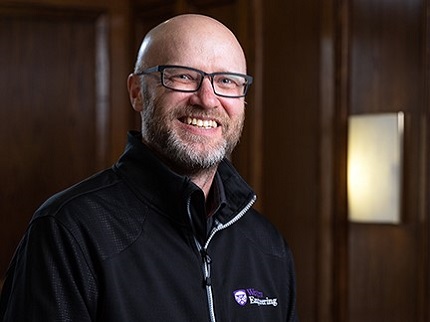
Greg Kopp
Dr. Greg Kopp is the ImpactWX Chair in Severe Storms Engineering, lead researcher in the Northern Tornadoes Project (NTP), and a professor in Western University’s Department of Civil and Environmental Engineering. He received a BSc in Mechanical Engineering from the University of Manitoba in 1989, a MEng from McMaster University in 1991 and a PhD in Mechanical Engineering from the University of Toronto in 1995. His expertise and research relate to mitigating damage to structures during extreme wind storms such as tornadoes and hurricanes.
Dr. Kopp works actively to implement research findings into practice, currently serving as Chair of the ASCE 49 Standards Committee on Wind Tunnel Testing For Buildings and other Structures, and as a member of various other Building Code committees. A former Canada Research Chair in Wind Engineering, he is also the lead researcher for the Three Little Pigs Project at The Insurance Research Lab for Better Homes.
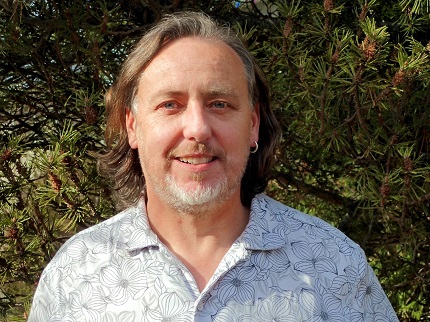
Julian Brimelow
Dr. Julian Brimelow is an adjunct professor in Civil and Environmental Engineering and Executive Director of the NHP at Western, and is also an adjunct professor in the Department of Environment and Geography at the University of Manitoba. He graduated from the University of Pretoria (South Africa) with a BSc in meteorology in 1993, completed his MSc at the University of Alberta in 1999, and earned his PhD at the University of Manitoba in 2011.
Dr. Brimelow has more than 20 years of experience working as an expert in severe convective storms, most recently with Environment Canada. He has participated in multiple research programs and has published extensively in the peer-reviewed literature. He draws on specialized observational datasets and numerical modeling to advance our understanding of severe and extreme weather, with a focus on hailstorms and hail.
Principal Investigators
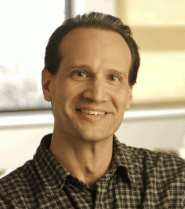 John Hanesiak
John Hanesiak
Dr. John Hanesiak's collaboration with Northern Hail Project (NHP) provides critical research and meteorological expertise for western Canada.
He is a professor in University of Manitoba's Department of Environment and Geography. Dr. Hanesiak received a BSc in Physics and Mathematics from University of Winnipeg in 1990, a Certificate of Meteorology from York University in 1991, a MSc in Atmospheric Science from York University in 1994, and a PhD in Geography from University of Manitoba in 2001. Prior to joining the University of Manitoba in 2001, he was an operational meteorologist with Environment Canada.
Currently, he researches convection processes, severe/extreme weather and climate, storms, and surface-atmosphere interactions. He uses field measurements and numerical modelling to better understand the processes and interactions within these areas.
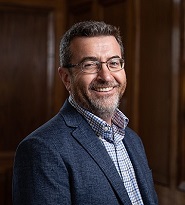 David Sills
David Sills
Dr. David Sills is Executive Director of the Northern Tornadoes Project as well as an adjunct professor with both the Civil and Environmental Engineering Department at Western University and the Department of Environment and Geography at the University of Manitoba. He received a BSc in Atmospheric Science and Certificate in Meteorology from York University in 1993, as well as a PhD in Atmospheric Science from York University in 1998.
Dr. Sills worked for more than 20 years as a severe weather scientist with Environment Canada, conducting research on Canadian tornadoes, severe weather nowcasting and mesoscale meteorology.
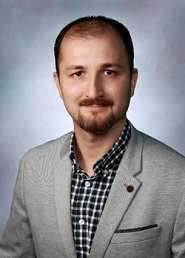 Reza Najafi
Reza Najafi
Dr. Reza Najafi is an assistant professor in the Department of Civil & Environmental Engineering at Western.
His research team develops and integrates state-of-the-art statistical and process-based approaches to understand and predict the spatial and temporal variability of natural hazard risks. This includes characterizing the interactions between hazards and infrastructure systems in space and time to assess the corresponding compounding and cascading effects.
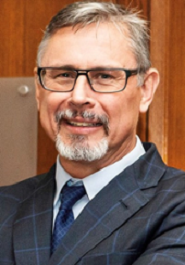 Tim Newson
Tim Newson
Dr. Tim Newson is a professor in the Department of Civil & Environmental Engineering at Western and is an expert on geotechnical engineering and tree biomechanics.
He is the Director of the Geotechnical Research Centre at Western. His research interests include in-situ testing, constitutive modeling of soils, tree biomechanics, wind engineering, buried structures, centrifuge and laboratory testing techniques, dynamic soil-structure interaction and offshore foundations.
 Yanping Li
Yanping Li
Dr. Yanping Li is an associate professor at University of Saskatchewan. Her research focuses on climate change study using coupled cryosphere–land surface–climate modeling system and the interdisciplinary study of climate change issues related to extreme events in Canada.
She has been using modeling to see how the coupled Earth system responds to climate changes that are crucial to inform the decision-making process and tackle the risk assessment and resilience issues.
 Katsu Goda
Katsu Goda
Dr. Katsu Goda is an associate professor in Earth Sciences and Statistical & Actuarial Sciences and Canada Research Chair in Multi-Hazard Risk Assessment at Western.
His research focuses on catastrophic multi-hazard risk management from economic and societal viewpoints. His research interests are broad and multidisciplinary, spanning seismology, earthquake-tsunami engineering, financial risk analysis, and decision-making under uncertainty. He has extensive expertise in developing natural catastrophe models and applying them to insurance risk quantification as well as evaluating social vulnerability of communities.
Project Staff & Students
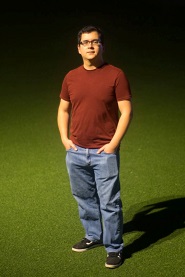 Simon Eng
Simon Eng
Simon Eng has combined degrees in civil engineering and meteorology, having made a career out of studying the impacts of climate and weather on the built environment. Since 2007, Simon’s work has focused primarily in the field of severe weather and climate change impacts and adaptation, in government, academic and private industry capacities.
Throughout his career, he has assisted in conducting numerous detailed climate and severe weather risk assessments of critical infrastructure. These duties include assessments and reviews of existing codes, standards and other guidance as they relate to the interaction of climate and weather with buildings and infrastructure, as well as the extraction, analysis and interpretation of climate and weather data and information. Through his roles as a research meteorologist, forecast assistant and researcher of historically significant weather events, Simon also has experience with primary climate and severe weather data collection, public outreach and other stakeholder engagement, including on-site forensic damage investigations immediately following severe weather events. Simon has held a lifelong passion for severe weather, with a particular focus on severe convective events, including tornadoes, damaging hail and convective windstorms.
 Liz Sutherland
Liz Sutherland
Liz Sutherland (BSc [Hons] ’16, Geographic Information Science, Western University; MLIS ’23, Library and Information Science, Western University) is the GIS Specialist for NTP/NHP (through the Western Libraries Map & Data Centre).
Liz has worked with NTP since 2018 and built the NTP Open Data Site and digital infrastructure in 2019. She provides overall GIS guidance and leadership to the data curation aspects of the project. She is interested in connecting researchers on campus with GIS in order to provide insights into their data and projects, and to promote access and dissemination of research outputs. Liz is interested in researching open geospatial data, and using GIS as a tool for knowledge exchange, teaching, and research. Liz is passionate about establishing Western Libraries Map and Data Centre as a premiere GIS research centre, to showcase the amazing research being done across campus using web-GIS tools.
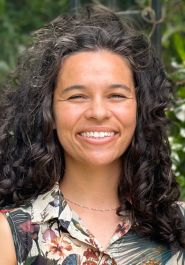 Maia Somers
Maia Somers
Maia Somers (BSc [Hons] '17, Geology and Physical Geography, Western University; MSc '23, Physical Geography, Queen’s University) is the GIS Technical Specialist for the CSSL (through the Western Libraries Map and Data Centre).
She works with NTP and Northern Hail Project (NHP) to store and maintain the Project’s information and data including aerial, drone, satellite, and ground surveys. She also supports the field survey team assisting with data collection and maintaining survey forms and maintains NTP and NHP’s Open Data Sites and event dashboards. Maia is passionate about science education and believes GIS really shines when it can be used to make data more accessible and bridge gaps in knowledge between data and the user.
“Geographic Information Science is an integrative tool that provides geographic context to data, enhancing the ability for all users, from engineers to the public, to view, interact and gain new insights”, she says.
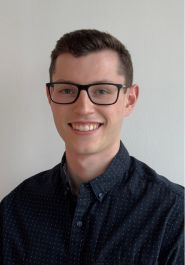 Jack Hamilton
Jack Hamilton
Jack Hamilton (B.IS [Hons], Aviation and Meteorology, Seneca Polytechnic) is the Field Coordinator with the NHP and a MESc student with Western Engineering.
As Field Coordinator, Jack manages the NHP field campaign, leading missions across the study area in southern Alberta from late May to mid-August. During fieldwork, the NHP field team collects hailstones from behind hail-producing storms and uses drones to capture data on the size and characteristics of hailswaths. Jack’s master’s work focuses on developing a Canadian hail climatology using ERA5 reanalysis and the HAILCAST numerical hail prediction model. Previously, Jack worked as an undergraduate researcher with the Northern Tornadoes Project.
Institutional Partners
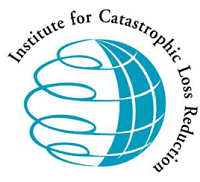 The Institute for Catastrophic Loss Reduction (ICLR)
The Institute for Catastrophic Loss Reduction (ICLR)
ICLR is a world-class centre of excellence for multidisciplinary disaster prevention research and communication, as recognized by the International Council for Science. It was established by Canada’s property and casualty (P&C) insurance industry as an independent, not-for-profit research institute.
ICLR’s insurance company membership represents more than 90% of the Canadian P&C market. Its mission is to reduce the risk of fatalities, injuries, and property damages from severe storms and other natural disasters in Canada. Increased training in this area has the potential to minimize risks of harmful impacts and losses faced by communities and will help Canadians in their efforts to reduce disaster risks. ICLR is a champion of disaster risk reduction in Canada and provides active links among researchers at academic institutions, professionals in the insurance industry, and in public sector organizations.
 The Insurance Institute for Business & Home Safety (IBHS)
The Insurance Institute for Business & Home Safety (IBHS)
IBHS has been conducting research on hail and hailstorms for over a decade to better understand the frequency and severity of the hail hazard and its impact on the built environment, ultimately with the goal of reducing losses for homes and businesses in the United States.
IBHS is an independent, non-profit, scientific research and communications organization supported solely by property insurers and reinsurers in the United States. IBHS’s building safety research leads to real-world solutions for home and business owners, helping to create more resilient communities.
 Instant Weather
Instant Weather
Instant Weather, Inc. was founded in 2013 with the goal of raising awareness about tornadoes and severe weather. It has since grown to serve more than one million passionate community members across Canada and the US. These members submit a significant number of hail reports, most of which are forwarded to the NHP and ECCC in order to help with alerting and verification.
Under this partnership, NHP and IW will collaborate on the development of hail detection and nowcasting tools.
 Weatherlogics
Weatherlogics
Weatherlogics is a private-sector meteorology firm that provides more accurate weather information to a wide range of clients. This includes providing hail forecasts and hail damage information to crop and property insurers in western Canada, in addition to collecting and validating hail reports. Their mission is to become the authority for weather information by providing innovative and customer-focused solutions.
The partnership between Weatherlogics and the NHP will improve the accuracy of the hail reports and databases, and also result in the cross-pollination of forecast tools and techniques used by the two groups.
 Catastrophe Indices and Quantification (CatIQ)
Catastrophe Indices and Quantification (CatIQ)
CatIQ delivers detailed analytical and meteorological information on Canadian natural and man-made catastrophes. Through its online subscription-based platform, CatIQ combines comprehensive insured loss and exposure indices and other related information to better serve the needs of the insurance / reinsurance / ILS industries, public sector and other stakeholders. CatIQ was established in 2014 with the support of the overwhelming majority of the Canadian insurance and reinsurance industry and is widely recognized as the most reliable source of catastrophe loss information in Canada.
 The Weather Network
The Weather Network
NHP's partnership with Canada's The Weather Network (TWN/MM) gives the Project access to TWN/MM's vast collection of severe weather content as well as national reach for NHP's messaging. TWN/MM field reporters also cover a lot of ground across Canada while observing severe convective storms and their effects. In several cases in 2022, TWN/MM field reports provided essential event information that led to numerous hail reports and documentation.
The partnership also makes every TWN/MM audience member a potential citizen scientist in the quest to document every Canadian hail event.
